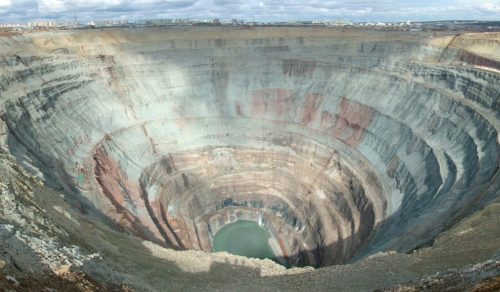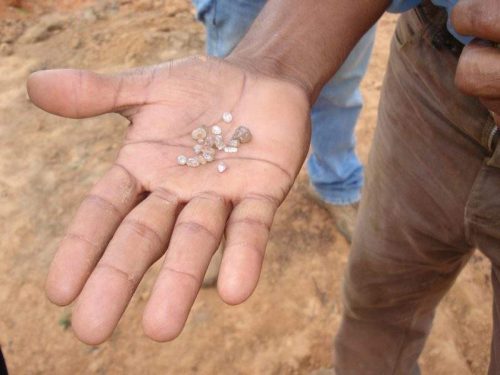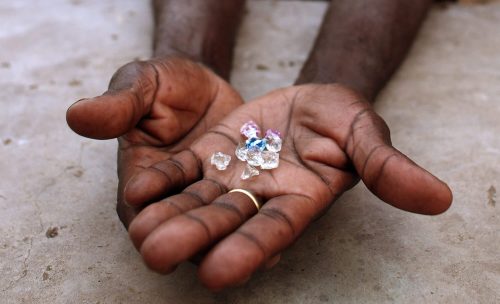
Mining has been an integral part of human civilization for centuries, serving as a driving force behind economic growth and technological advancement. Among the countless minerals that lie beneath the Earth’s surface, gold and diamonds hold a special allure.
These precious gems have captured the human imagination for generations, with their value extending far beyond their aesthetic appeal. In this article, we will delve into the fascinating world of gold and diamond mining, exploring the processes, challenges, and environmental considerations that come with unlocking Earth’s riches.
Gold Mining: A Glimpse into History
Gold, often referred to as the “king of metals,” has held a prominent place in human history. Its use dates back to ancient civilizations, where it was employed for currency, jewelry, and religious artifacts. Today, gold continues to be highly coveted, not only for its beauty but also for its role as a financial asset and a hedge against economic instability.
Exploration and Discovery
The journey to uncover Earth’s gold reserves begins with exploration. Geologists and prospectors study geological formations, historical mining records, and satellite imagery to identify potential gold deposits. Ground surveys and drilling are then conducted to confirm the presence of gold-bearing rocks.

Extraction Methods
Gold is typically found in ore deposits, which consist of rocks and minerals containing varying concentrations of gold. To extract this precious metal, several methods are employed:
- Open-Pit Mining: This method involves the removal of overburden (soil, rock, and vegetation) to expose the gold-bearing ore. Heavy machinery, such as excavators and trucks, is used to extract and transport the ore to a processing plant.
- Underground Mining: When gold deposits are located at greater depths, underground mining becomes necessary. Miners access the ore through shafts or tunnels, and specialized equipment is used to extract and transport it.
- Heap Leaching: In cases where gold is disseminated throughout low-grade ore, heap leaching is a cost-effective method. Crushed ore is piled into heaps and treated with a solution that dissolves the gold, which is then collected and further processed.
Environmental Impact
Gold mining, like any industrial activity, has environmental consequences. The removal of vegetation and topsoil in open-pit mining can lead to soil erosion and habitat disruption. Chemicals used in the extraction process, such as cyanide, pose environmental risks if not properly managed. To mitigate these impacts, responsible mining practices and stringent regulations are crucial.
The Dazzling World of Diamond Mining
Diamonds, often associated with luxury and romance, are another precious resource extracted from the Earth’s depths. Unlike gold, diamonds are formed deep within the Earth’s mantle under extreme pressure and temperature conditions.

Kimberlite Pipes: The Treasure Troves
Most of the world’s diamonds are found within kimberlite pipes, rare volcanic rock formations that bring these precious gems to the surface. The process of diamond mining involves several key steps:
- Exploration: Similar to gold mining, diamond exploration begins with geological surveys and the use of specialized equipment, like seismic sensors and core drills. Once a potential kimberlite pipe is identified, a more detailed assessment is conducted.
- Mining: Kimberlite pipes are typically mined through open-pit or underground methods. The ore is transported to a processing plant, where the diamonds are extracted from the host rock.
- Sorting and Grading: Not all diamonds are of equal quality. After extraction, diamonds are sorted and graded based on their size, color, clarity, and cut. This process determines their market value.
Environmental Considerations
Diamond mining can have substantial environmental impacts, including habitat disruption, soil erosion, and water pollution. However, the diamond industry has made significant efforts to implement sustainable mining practices and minimize its ecological footprint. This includes initiatives to rehabilitate mined-out areas and reduce water usage.
Ethical Concerns and Conflict Diamonds
In addition to environmental considerations, the diamond industry has faced ethical challenges related to conflict diamonds, also known as “blood diamonds.” These are diamonds mined in war zones and sold to finance armed conflict against governments. The trade in conflict diamonds has funded brutal conflicts in countries like Sierra Leone and Angola.
To combat the trade in conflict diamonds, the international community established the Kimberley Process Certification Scheme in 2003. This initiative aims to ensure that diamonds are sourced from legitimate, conflict-free locations. While the Kimberley Process has made progress, some critics argue that it has not been entirely effective in eliminating the trade in conflict diamonds.
Conclusion
Gold and diamond mining are complex processes that involve geological expertise, advanced technology, and a deep understanding of environmental and ethical concerns. These industries play a significant role in the global economy, driving economic development in many countries. However, they also face ongoing challenges in terms of sustainability, responsible sourcing, and minimizing their environmental impact.
As consumers, it’s essential to be aware of the origins of the products we buy, including jewelry. Supporting responsible mining practices and ethical sourcing efforts can help ensure that Earth’s riches are unlocked in a way that benefits both humanity and the planet. In this way, we can continue to appreciate the beauty and value of gold and diamonds while preserving the Earth for future generations.






